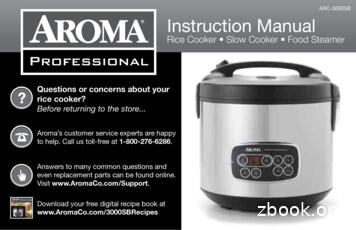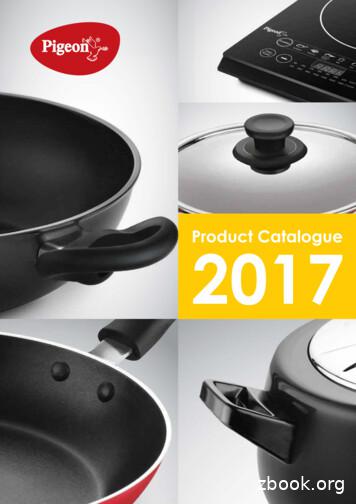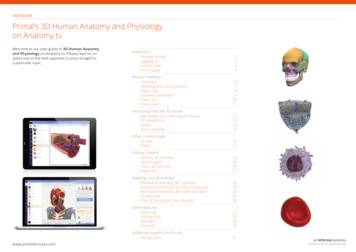Dynamic Design: Hot Dog Cooker A Collection Process - NASA Solar System .
Hot Dog Cooker Dynamic Design: A Collection Process STUDENT ACTIVITY There are many techniques for constructing solar cookers. A reflective hot dog cooker can be built from materials that are often found in the home, including cardboard, aluminum foil, masking tape, wire, and poster board. In this cooking method, sunlight hits the reflective surface and focuses on the hot dog held in the center. Basic materials, instructions, and illustrations for building a solar hog dog cooker are listed below. MATERIALS 1. Two pieces of heavy cardboard (like the side of a cardboard carton). The first piece must be at least ten inches square and the second smaller piece must be at least four inches by five inches. 2. A piece of light posterboard eight inches wide and sixteen inches long. 3. Twelve-inch wide aluminum foil. (You will use about 32 inches of the material.) 4. Some masking tape. (You may experiment with other types of tape.) 5. Nine inch long sticks about 1/16 inch in diameter. You may also use lengths of heavy wire. (At your local grocery store in the international food section you may find small bamboo sticks used to make shish kebobs and imported from Japan. These are inexpensive and will do the job.) 6. Four one inch long spreading brass brads. INSTRUCTIONS To make this special solar energy cooker, do each step. As you finish each step, put a check mark in the space ahead of the instruction. Make sure you also look at the photograph that goes with the step or steps. Have fun and here we go. 1. Using a large compass or a string and pencil, lay out a ten inch diameter circle on the larger piece of heavy cardboard. Cut out this circle using a large scissors or a sharp knife. 2. Draw a straight line (line "1") through the center pinhole in the cardboard, ( a line along the diameter of the circle). STUDENT ACTIVITY GENESIS 1
3. Mark off points at 2-1/2 inches (hole "a") and 3-1/4 inches (holes "b") on either side of the centerpoint along the straight line you just have drawn. 4. Draw a straight line (line #2) 3/4 inch on one side of the straight line through the center. 5. Draw a line that goes at right angles to the lines you have drawn and through the center hole (line #3). 6. Mark off holes that are 4-1/4 inch (holes "c") on line #2 from line #3. 7. Using an ice pick or other sharp instrument, punch out the holes "a," "b," and "c". 8. Using a sharp knife or razor blade, cut along line #3 so that the cardboard circle is cut in half. 9. Put the cardboard semicircles to one side now and get your piece of posterboard. (It should already be eight inches wide and sixteen inches long.) 10. Take a piece of aluminum foil that is about 18 inches long (and, of course, twelve inches wide). 11. Lay the shiny side of the foil down on the table and put the piece of posterboard on top of it - center the board so the there is roughly an equal amount of foil sticking out on all sides. STUDENT ACTIVITY GENESIS 2
12. Fold the aluminum foil over the posterboard so that the side of the board facing down on the table will be foil covered. Put a few pieces of masking tape at the corners and along the sides to hold the foil securely in place. Put the foil covered posterboard to one side for a moment. 13. Take the two half circles of heavy cardboard. These will be the sides of the hot dog cooker. Hold them up for a moment so that you can see how the holes line up. 14. Mark the sides of the half circles that are on the outsides away from where the hot dog will be, with an "O" (for the "outside," of course!). 15. Mark the other sides with an "I" (you guessed it - for "inside"!). 16. Get two more pieces of aluminum foils that are about seven inches long (of course, again, twelve inches wide). Lay one of the piece down on the table, shiny side down, as you did with the larger piece of foil. 17. Put one of the half circles with the "I" (inside) side down onto the foil (the "O" side will be up). Again, center the piece of cardboard on the foil. 18. Fold the foil over the cardboard and tape the foil to hold it. 19. Make sure you find the "a," "b," and "c" holes and poke the through the foil. 20. Do the same thing with the other half circle of cardboard so that it is also foil covered on the inside surface. Now, we will assemble the back and sides of the cooker. 21. Lay the aluminum-covered posterboard down on the table with the aluminum-covered side up. 22. Take one of the aluminum-covered half circles. Hold it so that the aluminum-covered side faces in towards the aluminum cover on the posterboard, and also so that the outside edge of the half circle (where it was cut along line 3) lines up with the edge of the posterboard. 23. Put a piece of tape from the posterboard to the cardboard so that the cardboard half circle stands up on the aluminum-covered posterboard. 24. Now roll the aluminum-covered half circle along the edge of the aluminum-covered posterboard, putting a piece of tape every two or so inches as you go. Make sure there is a snug fit between the aluminum half circle side and the foil covered back posterboard. STUDENT ACTIVITY GENESIS 3
25. Continue until the half circle (with the aluminum foil on the inside) is attached to the aluminum foil-covered posterboard. (This will make one end of a trough.) 26. Now attach the other foil-covered cardboard half circle, with the aluminum-covered side facing in, to complete the trough. Use a similar technique as you did with the other piece of cardboard using tape every two or so inches. 27. Put the trough to one side. We are almost done now ! 28. Take the small piece of heavy cardboard (four inches by five inches) and draw a line (line 4) down the center along the five-inch length. 29. Draw a straight line one inch on each side of line 4 (lines #5). 30. Mark off points one-half inch and 1-5/8 inches along line 5 from one end of the cardboard (holes "d"). STUDENT ACTIVITY GENESIS 4
31. Punch out holes "d" using an ice pick or sharp instrument. 32. Using a sharp knife or razor blade, cut along line 4 so that you have two pieces of cardboard, each two by five inches. 33. Put two brass brads from the inside of the trough through holes "b" and "c," and through holes "d" on the two-inch by five-inch piece of cardboard. Spread the brad so that the rectangular piece of cardboard is securely attached to one side of the cooker. 34. Do the same thing on the other side of the cooker with the remaining piece of two-inch by five-inch cardboard. These pieces of cardboard act as legs to prevent the hot dog cooker from just rolling around on the table, and now you are ready to start cooking! 35. Slide the stick from the outside in through one of the "a" holes. 36. Hold the hot dog so that as you slide the stick further in through the "a" hole, you also put the stick through the length of the hot dog. 37. Continue until the stick is completely through the hot dog. Then, put the stick about one-fourth inch through the other "a" hole so that the stick and hot dog are supported at both ends. Center the hot dog on the stick. 38. In summer, stand the cooker so that the opening looks more upward and, if winter, turn the cooker over so that the opening faces more downward. 39. Aim the hot dog cooker toward the sun. It will take about 45 minutes to one hour, and then . HAPPY HOT DOG EATING! Note: You can shorten your cooking time by stretching a piece of clinging plastic wrap over the whole front of the cooker after the hot dog is on the stick. This will keep the hot dog from cooling down as the wind blows over it. to Genesis mission Outreach Coordinator Dr. Gil Yanow, at Jet Propulsion Laboratory, for writing this student activity, “Hot Dog Cooker.” STUDENT ACTIVITY GENESIS 5
36. Hold the hot dog so that as you slide the stick further in through the "a" hole, you also put the stick through the length of the hot dog. 37. Continue until the stick is completely through the hot dog. Then, put the stick about one-fourth inch through the other "a" hole so that the stick and hot dog are supported at both ends.
The Power Pressure Cooker XL generates extreme heat and steam in its operation. All necessary precautions must be taken to avoid fire, burns and other personal injury during its operation. When in operation the Power Pressure Cooker XL requires sufficient air space on all sides including top and bottom. Never operateFile Size: 1MBPage Count: 19Explore furtherfree pressure cooker manual & recipe booklet librarywww.hippressurecooking.comPower Pressure Cooker XL User Manual - Manuals manuals.plusTristar Power Cooker Electric Pressure Cooker Manual .www.hippressurecooking.comTechnique Oval Talking Electric Pressure Cooker Manual .www.hippressurecooking.comCook's Essentials 4 qt Electric Pressure Cooker Manual .www.hippressurecooking.comRecommended to you b
Beko AD531AW 50cm Electric Cooker Electra BEF60SEW 60cm Electric Cooker Gorenje E5111WG_WH 50cm Electric Cooker. Electra BEF50SGW 50cm Gas Cooker Beko KDG581W 50cm Twin Cavity Gas Cooker Electra BEF60SGW 60cm Gas Cooker Beko KDG611W 60cm Double Gas Cooker Gas Cookers. Beko BRIF22300X 60cm Single Oven Indesit IFW6330IX 60cm Single Oven Hotpoint SA2844HIX 60cm Single Oven Built-In Ovens. Built .
The pressure cooker should always be used on a steady cooking surface. Don’t put the pressure cooker on a coil with a bigger diameter than the cooker’s bottom. When cooking on gas, the flames shall not reach the cooker’s wall. Only use this pressure cooker on heat sour
5. Remove the inner cooking pot from rice cooker and clean with warm, soapy water. Rinse and dry thoroughly before returning to cooker. 6. Wipe body clean with a damp cloth. NOTE Do not use abrasive cleaners or scouring pads. Do not immerse the rice cooker base, cord or plug in water at any time. The provided rice cooker cup is the .
COOKER All in One Super Cooker Chroma Amelia Titanium Cooker Spectra Cooker Deluxe Magna S.S. Cooker . RICE COOKER Joy Glorious Pg Special Mixer Viola Viola Plus Super Storm Advanced Egnite Classic Splendour Jx . Dhokla Plate Glass Lid 3495 HARD AN
Description of a single pot box-type solar cooker (solar cooker) Single-pot box type solar cooker (solar cooker) consists of a rectangular enclosure insulated hot-box and outer lid having a mirror reflector fitted to its underside. The hot box consists of two trays having at least 5 cm spacing which is fitted with glass insulation.
4. Close supervision is necessary when the pressure cooker is used near children. 5. DO NOT allow children to operate under any circumstance. 6. Do not place the pressure cooker in a heated oven. 7. Extreme caution must be used when moving a pressure cooker containing hot liquids. 8. Do not use pressure cooker for other than intended use. 9 .
The anatomy and physiology Topic text is clearly and concisely written, and is presented in easily digestible units of information to help facilitate learning. SE GIDE: PIMAL’S 3D HMA AATOM AD PHSIOLOG Page 10 of 31. SLIDE USER GUIDE: PRIMALS 3D HUMAN ANATOMY AND PHYSIOLOGY Page 11 of 31 MOVIE SLIDE – DIAGRAM SLIDE – ILLUSTRATION SLIDE – PHOTOGRAPH SLIDE – STATIC 3D IMAGE The View .






















